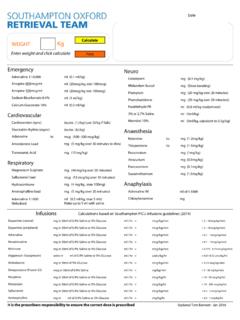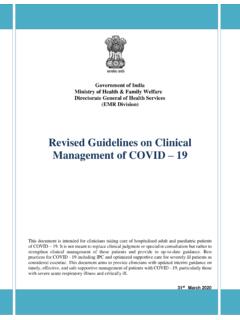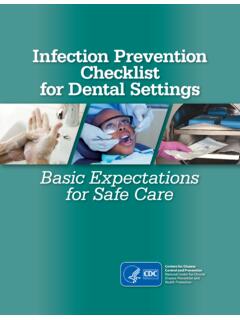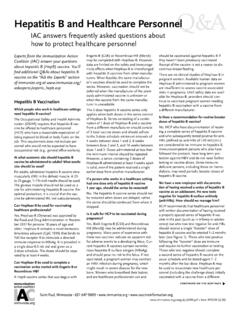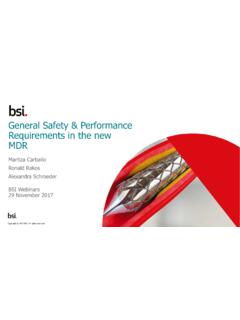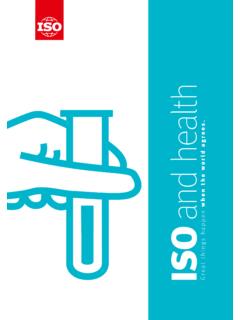Transcription of BSPED Interim Guideline for the Management of Children …
1 Updated January 2020 BSPED Interim Guideline for the Management of Children and Young People under the age of 18 years with Diabetic Ketoacidosis The previous Guideline for the Management of DKA has been revised by the BSPED special interest group in diabetic ketoacidosis following a series of meetings. The relatively limited evidence regarding the Management of DKA has been reviewed. Where there is appropriate evidence these guidelines have been based on such evidence. For many aspects of the Management of DKA the evidence base is limited and where there is limited evidence, consensus recommendations have been consolidated. The Guideline is broadly similar to the International Society for Paediatric and Adolescent Diabetes (ISPAD). NICE have recently announced that they plan to review the Management on DKA in 2020/21.
2 However, the BSPED DKA Special Interest Group has completed their work revising the Guideline and in view of new evidence felt it should be published as an Interim recommendation pending the publication of the future NICE review. These BSPED guidelines are believed to be as safe as possible in the light of current evidence. However, no guidelines can be considered entirely safe as complications may still arise. In particular the pathophysiology of cerebral oedema is still poorly understood. The following key changes have been made since the last version was published in 2015: 1) Where young people aged 16-18 years are managed by adult medical teams because of local arrangements, it is considered appropriate for them to be managed using local adult guidelines that the teams are familiar with rather than using potentially unfamiliar paediatric guidelines.
3 Where individuals aged 16-18 are managed by Paediatric teams the Paediatric guidelines should be followed. 2) The ISPAD definition for DKA with acidosis and a bicarbonate of <15 mmol/l or a pH < , and ketones of > mmol per litre has been adopted. The previous BSPED Guideline recommended a bicarbonate of <18 mmol/l. 3) This Guideline uses pH to categorise the severity of DKA and to determine the degree of dehydration. Mild DKA venous pH or bicarbonate < 15 mmol/l. Assume 5% dehydration Moderate DKA venous pH or bicarbonate < 10 mmol/l. Assume 7% dehydration Severe DKA venous pH less than or serum bicarbonate < 5 mmol/l. Assume 10% dehydration The previous BSPED Guideline categorised the severity of diabetic ketoacidosis based on pH, with those individuals with a pH > defined as having have mild or moderate DKA and those with a pH < having severe DKA.
4 Additional stratification has been adopted in this revised Guideline with mild, moderate and severe definitions adopted. 4) There is increased emphasis within this Guideline on ensuring adequate restoration of the circulation and treatment of shock. The use of inotropes in preference to fluid volume particularly early in resuscitation has been de-emphasised. Careful Management of fluid administration remains an important part of the Management of diabetic ketoacidosis because of the risk of cerebral oedema but there is increased emphasis on the importance of treating shock and restoring appropriate circulatory volume. Patients presenting with shock should receive a 20 ml/kg bolus of saline over 15 minutes. Shock is defined as the APLS definition of tachycardia, prolonged central capillary refill etc it is not just poor peripheral perfusion.
5 Following the initial 20 ml/kg bolus patients should be reassessed and further boluses of 10 ml/kg may be given if required to restore adequate circulation up to a total of 40 ml/kg at which stage inotropes should be considered. Boluses given to treat shock should NOT be subtracted from the calculated fluid deficit. All patients with DKA (mild, moderate or severe) in whom intravenous fluids are felt to be indicated should receive an initial 10 ml/kg bolus over 60 minutes. This bolus SHOULD be subtracted from the calculated fluid deficit Updated January 2020 5) The calculation of maintenance fluids should be based on the traditional formula used in paediatrics in the UK. 100 ml/kg/day for the first 10 kg body weight, plus 50 ml/kg/day for 10 to 20 kg and 20 ml/kg/day for each additional kilogram above 20 kg.
6 This is a more permissive maintenance fluid rate than in the previous DKA Guideline and is a significant change. 6) A maximum weight of 80kg should be used for the calculation of fluid replacement and deficit as this ensures that excessive volumes of fluids are not given 7) The option to consider either units/kg/hr or units/kg/hr for Insulin infusion is maintained but the working group felt that units/kg/hour would be sufficient in most cases except perhaps in severe DKA. In Children younger than 5 years Units/kg/hr was suggested (consensus recommendation) to reduce the incidence of subsequent hypoglycaemia 8) Where Potassium is above the upper limit of the normal range at presentation it is recommended that Potassium is only added to Intravenous fluids after the patient has passed urine or until after the Potassium has fallen to within the upper limit of the normal range 9) In patients already on long acting insulin this should be continued and in new patients, consideration should be given to starting long acting subcutaneous insulin alongside intravenous insulin.
7 Remember: Children can die from DKA. They can die from - Cerebral oedema This is unpredictable, occurs more frequently in younger Children and newly diagnosed diabetes and has a mortality of around 25%. The causes are not known and evolution of cerebral oedema can be unpredictable. The Management of cerebral oedema is covered within the Guideline . Hypokalaemia This is preventable with careful monitoring and Management Aspiration pneumonia Use a naso-gastric tube in semi-conscious or unconscious Children Inadequate resuscitation It is important to ensure that Children with DKA receive adequate resuscitation if they are shocked. Inadequate resuscitation is likely to increase the risk of brain injury. Cerebral perfusion is influenced both by the circulatory perfusion pressure (blood pressure) and the intracranial pressure in incipient cerebral oedema.
8 Updated January 2020 Guidelines for the Management of Diabetic Ketoacidosis CONTENTS Page A. Diagnosis 1 B. Emergency Management in A&E 2 1. Resuscitation 2 2. fluid bolus 2 3. Investigations 2 C. Full Clinical Assessment 3 1. Conscious level 3 2. Full Examination 3 Where should the child be nursed? 3 D. Management 4 1. Fluids - volume 4 type 5 oral fluids 5 other fluid losses 5 2. Potassium 6 3. Insulin 6 4. Bicarbonate 7 5. Risk of Venous Thrombosis 7 E. Monitoring 7 1. Nursing observations 7 2. Medical reviews 7 F. Continuing Management 8 Insulin and fluid changes as BG levels fall 8 G. Insulin Management once Ketosis Resolved 9 H. Cerebral Oedema 9 I. Other Complications 10 J. Education and Follow-up 10 Glasgow Coma Scale Appendix 1 Making up Intravenous Fluids Appendix 2 Algorithm for Management Appendix 3 Management of Hyperosmolar Hyperglycaemia Appendix 4 Updated January 2020 1 A.
9 DIAGNOSIS: These are general guidelines for Management . Treatment may need modification to suit the individual patient and these guidelines do not remove the need for frequent detailed reassessments of the individual child's requirements and specific treatment tailored to those requirements. Diagnose DKA in Children and young people who have acidosis (indicated by blood pH below or plasma bicarbonate below 15 mmol/litre) and ketonaemia (indicated by blood beta-hydroxybutyrate above 3 mmol/litre) Blood glucose levels are generally high (above 11 mmol/l) but Children and young people with known diabetes may develop DKA with normal blood glucose levels. Use a near-patient testing method for blood ketone (beta-hydroxybutyrate) level for the diagnosis and monitoring of the treatment of DKA.
10 If a near-patient testing method is not available, use urinary ketone levels to make the diagnosis, but they are not useful for monitoring. Urinary ketones of more than ketones++ on standard dipsticks are typically equivalent to near patient blood ketones of > mmol/l. Urinary ketones must be read 15 seconds after stick is dipped. These guidelines are intended for the Management of Children and young people who have, in addition to the biochemical features above - clinical dehydration They may also have the following clinical features acidotic respiration drowsiness abdominal pain/nausea/vomiting Always consult with the consultant paediatrician on call as soon as you suspect DKA even if you feel confident of your Management . Children and young people with a pH &/or bicarb < 15 have MILD DKA Children and young people with a pH less than &/or bicarb < 10 have MODERATE DKA Children and young people with a pH less than &/or bicarb < 5 have SEVERE DKA IMPORTANT NOTES PLEASE READ 1.

